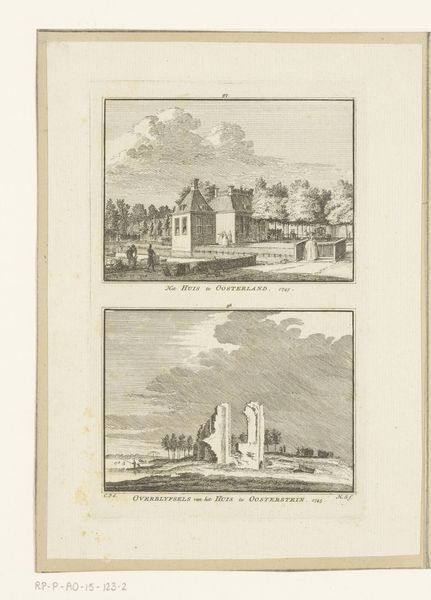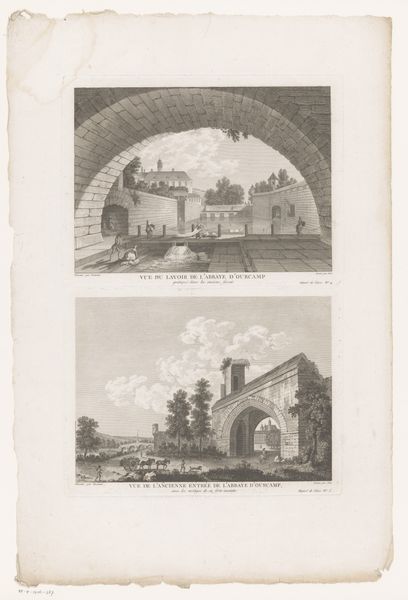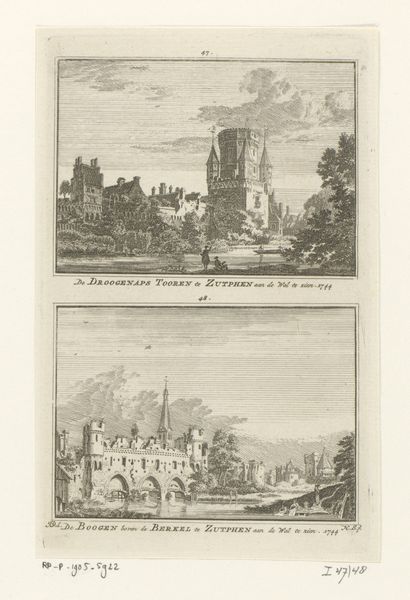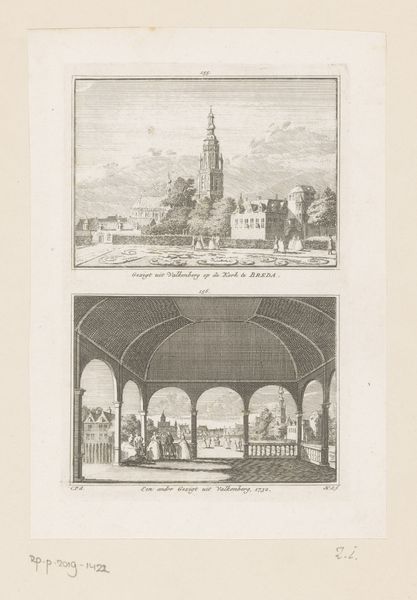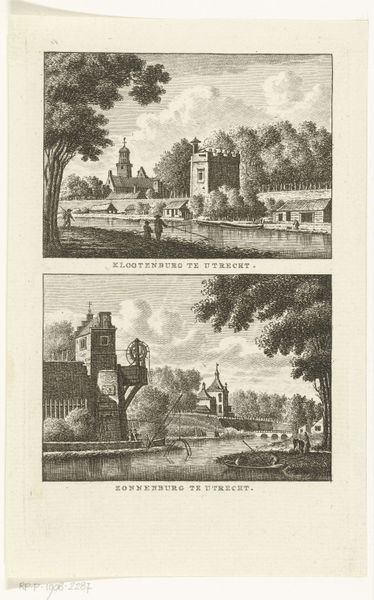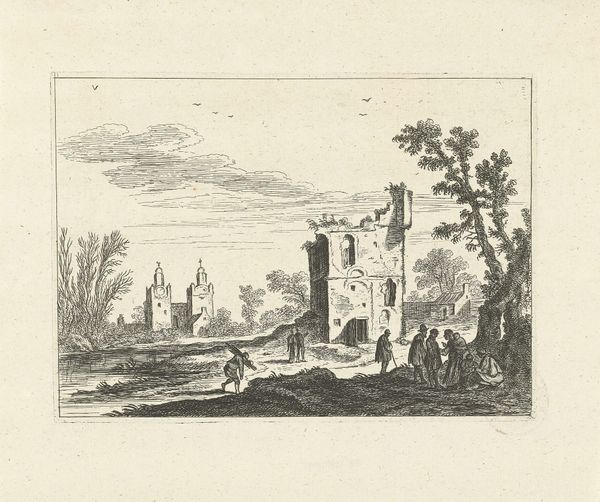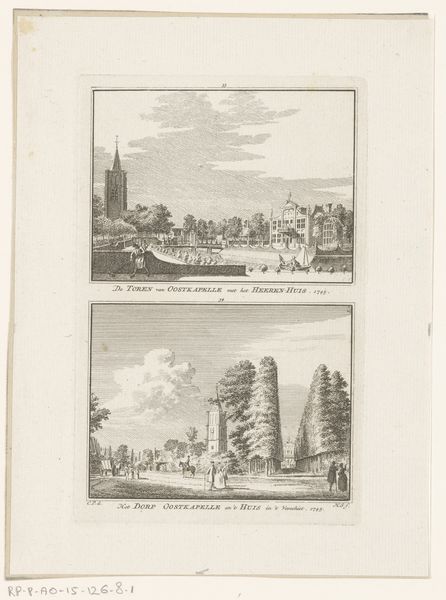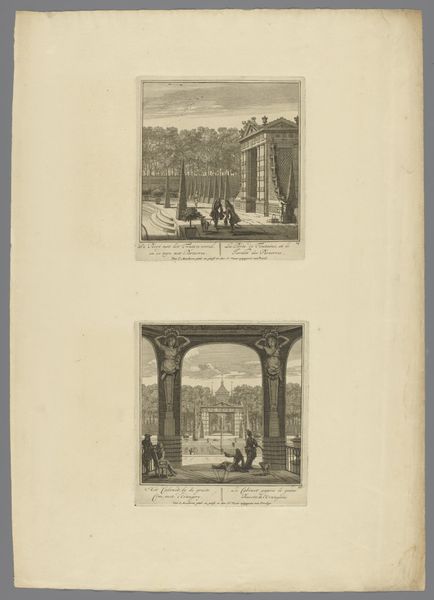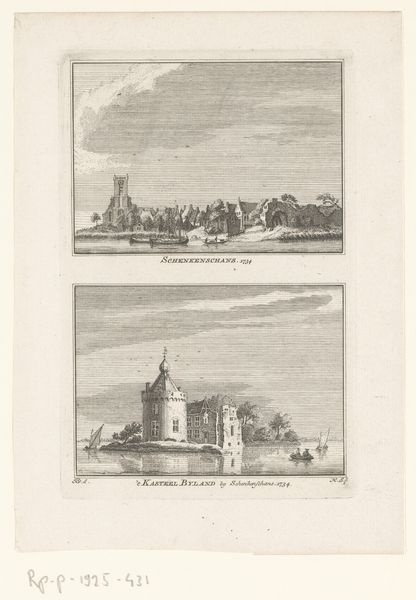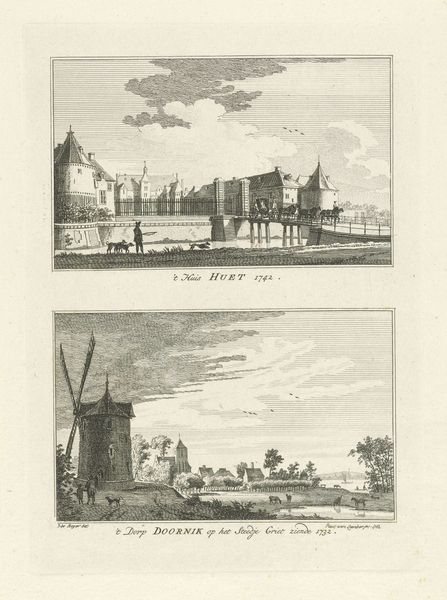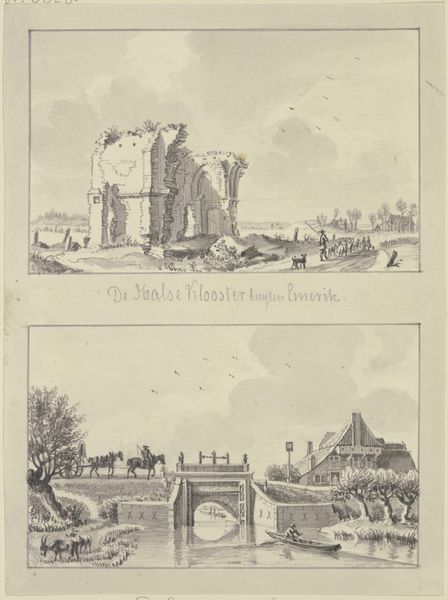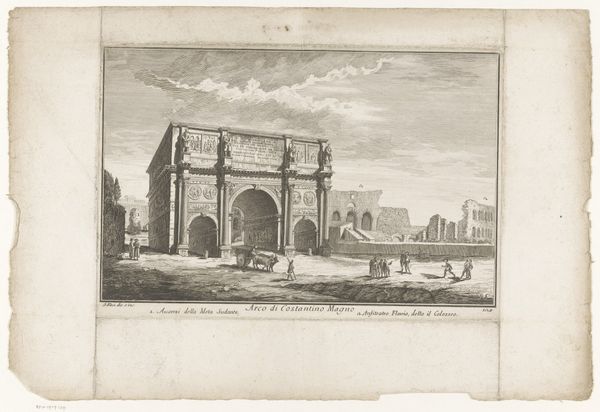
Dimensions: height 200 mm, width 145 mm
Copyright: Rijks Museum: Open Domain
Editor: So, here we have Paulus van Liender's "Ruïne en sluis buiten Emmerik, 1732-1736", an etching on paper completed in 1762. It features two contrasting scenes. There is this overall mood of fading grandeur or like a story slowly fading with time. What draws you to it? Curator: Fading grandeur is spot on! This piece whispers stories of time and transition. Notice how Liender contrasts the ruined structure above with the still-functional lock below? To me, it feels like a gentle meditation on the fleeting nature of human achievement versus the enduring power of nature's processes. Are we destined for such beautiful, slow, gentle decay? Editor: I hadn't thought of the contrast that way, that is really interesting. How would this resonate at the time? Curator: Well, in the 18th century, ruins held a particular fascination. They spoke to the rise and fall of civilizations, triggering reflections on mortality and the sublime. It was very fashionable to visit and paint such places. Do you think the picturesque composition is at play here? That delicate balance and sense of controlled chaos. Editor: Yeah I see that and it is a reflection of time I think. Was the goal here to document reality, or idealize the scenery, because it's hard to tell with how it renders reality! Curator: That's a great question! I think there is likely an idealization happening in Liender's rendering of reality. What appears documentary has also those emotions layered in! How strange. It certainly feels like the memory of a place, more than an exact record. Editor: Right. Well, I've learned a lot just in this short chat! Curator: Me too. It's fascinating how art can spark these layered dialogues across centuries. We learn about ourselves.
Comments
No comments
Be the first to comment and join the conversation on the ultimate creative platform.
